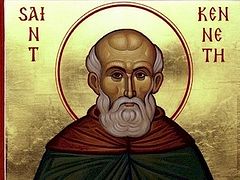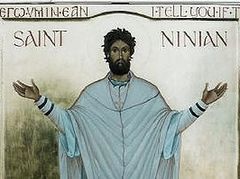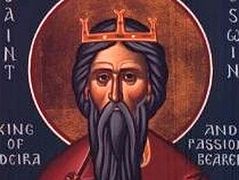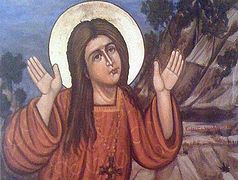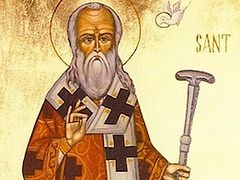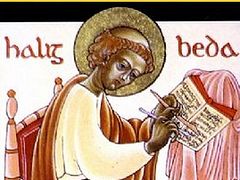London, January 17, 2014
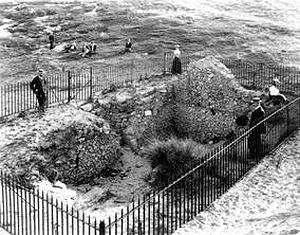 St. Piran's Oratory. Photo taken between 1892 and 1909
St. Piran's Oratory. Photo taken between 1892 and 1909
The building, constructed in the 5th or 6th century, was covered with sand and surrounded by a concrete silo in 1980 to protect it from foul weather. Now the specialists have given the "green light" to carry out excavation work, which is to begin in February or March of 2014.
The Oratory of St. Piran is considered to be the oldest stone Christian church in Britain. Its remains were discovered late in the 18th century. In 1835 and 1843 the first excavation work was carried out here, during which several human skeletons were found, one of them headless.
According to the tradition, the oratory was built by Holy Abbot Piran (+ C. 480, commemorated March 5/18), who is venerated as the patron-saint of Cornwall, along with St. Petroc and the Holy Archangel Michael. The flag of Cornwall, depicting a white cross on a black background, is called "St. Piran's flag".
St. Piran came to these lands from Ireland. According to tradition, Irish pagans tied a millstone around his neck and threw him off the cliff into the stormy sea. The sea calmed immediately and St. Piran reached the sandy beaches of Cornwall, which are called Perranzabuloe today. St. Piran had lived as a hermit near Padstow until the local Christians came to know about him. They came to him and asked him to found the monastery that came to be known as Lanpiran. St. Piran became its abbot.
St. Piran is considered the patron-saint of tin mining. Cornwall was known for its tin production even before its occupation by the Romans. The historical tin mining district is known as the “stannaries”, from the Latin word for tin. According to the tradition, the saint was buried in Perranzabuloe. Afterwards his relics were discovered and distributed to different churches.
* * *
The oldest church building in England, which has remained almost completely intact, is the tiny Church of St. Peter's-on-the-Wall, in the little town of Bradwell-on-Sea, in the county of Essex. This church was built by Holy Hierarch Cedd, enlightener of Essex, in 654. The oldest wooden church in England is St. Andrew's Church in the village of Greensted in Essex. The walls of its wooden nave date back from the 9th or 10th century. This church also claims to be the oldest existing wooden church building in the world and one of the most ancient wooden structures in Europe.

